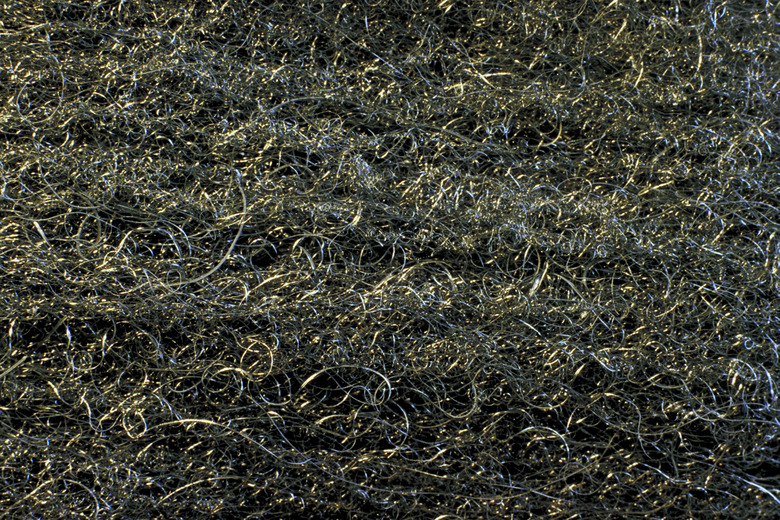Signs Of A Chemical Reaction With Steel Wool And Peroxide
Steel wool is fine, soft steel strands used as an abrasive for polishing wood during furniture refinishing. Peroxide is the short term for 3% household hydrogen peroxide. Both plain steel wool and hydrogen peroxide are available at most supermarkets. Steel wool reacts vigorously with hydrogen peroxide, but only under the right conditions. Something may be needed to initiate the reaction.
Procedure
Procedure
It is important to use steel wool that is free of any coating. Sometimes there is an unseen thin film of oil on the wool. A light washing with soapy water followed by a rinse will remove that. If this wool is placed in hydrogen peroxide, it may react so slowly that it doesn't seem to react at all. This is because the iron in steel wool needs to give off electrons to achieve a reaction. However, hydrogen peroxide is not a good electrical conductor. To make it conductive, a small amount of table salt can be stirred in; then the steel wool would be added. This should result in vigorous bubbling and abundant rust production.
Cite This Article
MLA
Summers, Vincent. "Signs Of A Chemical Reaction With Steel Wool And Peroxide" sciencing.com, https://www.sciencing.com/signs-of-a-chemical-reaction-with-steel-wool-and-peroxide-12731057/. 12 December 2013.
APA
Summers, Vincent. (2013, December 12). Signs Of A Chemical Reaction With Steel Wool And Peroxide. sciencing.com. Retrieved from https://www.sciencing.com/signs-of-a-chemical-reaction-with-steel-wool-and-peroxide-12731057/
Chicago
Summers, Vincent. Signs Of A Chemical Reaction With Steel Wool And Peroxide last modified August 30, 2022. https://www.sciencing.com/signs-of-a-chemical-reaction-with-steel-wool-and-peroxide-12731057/
